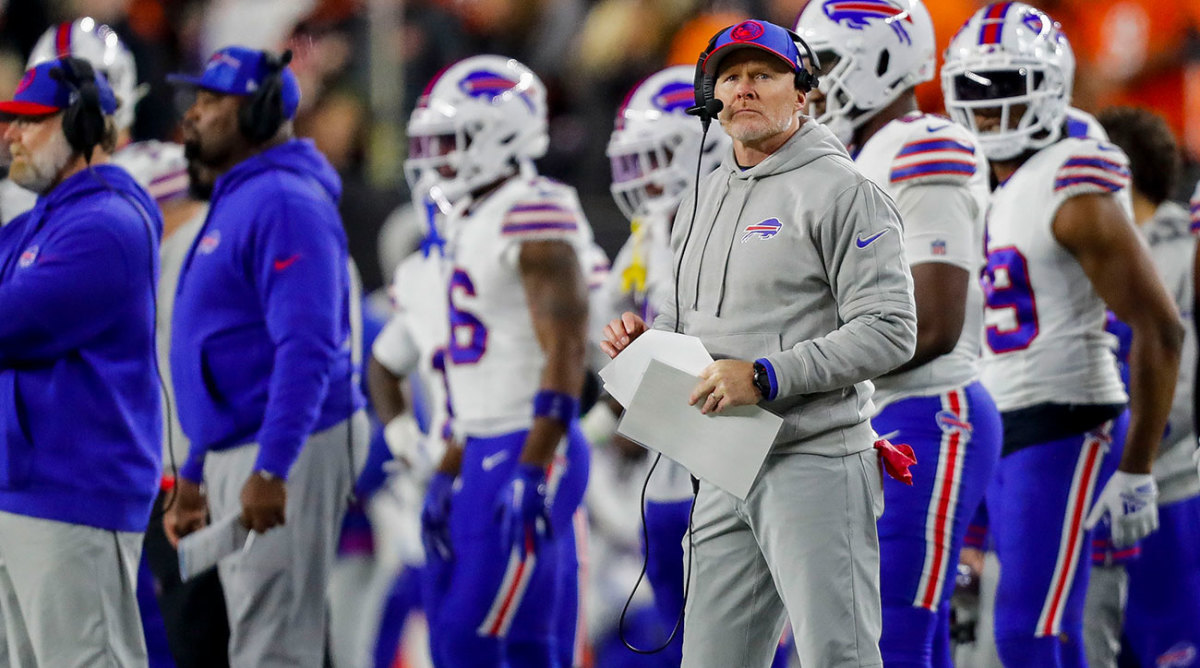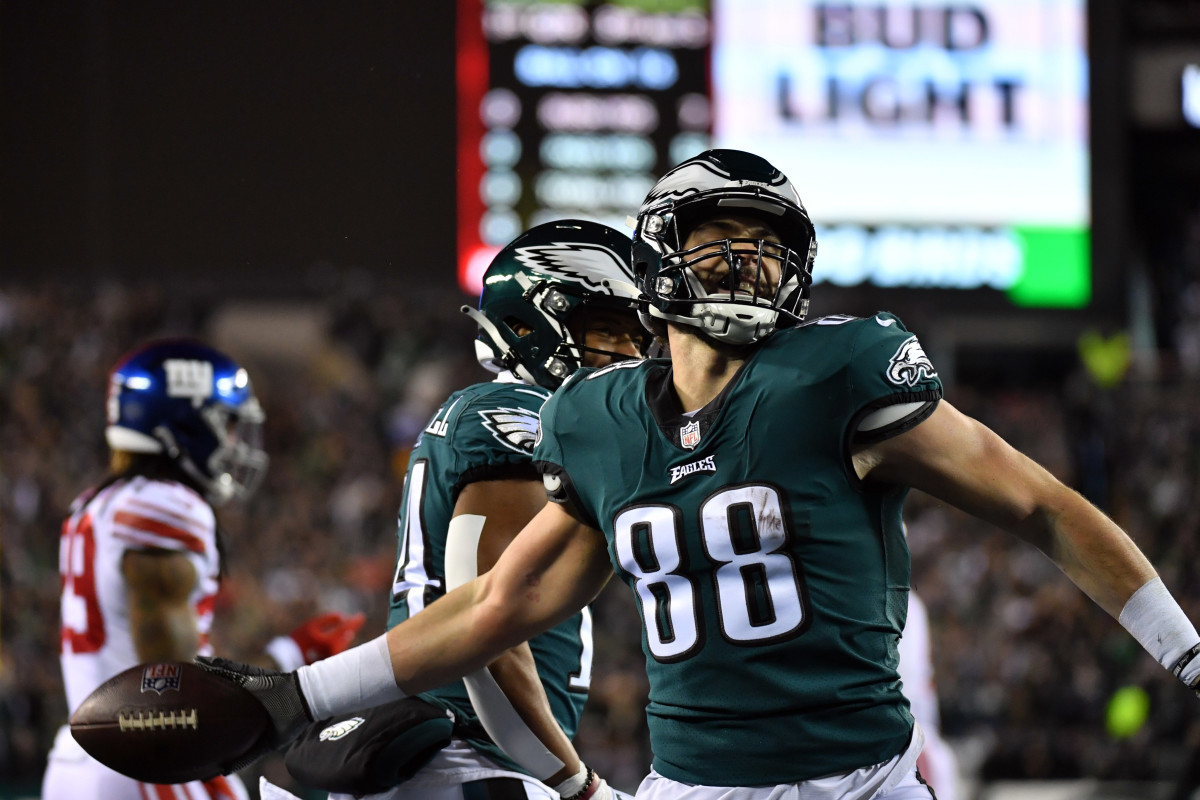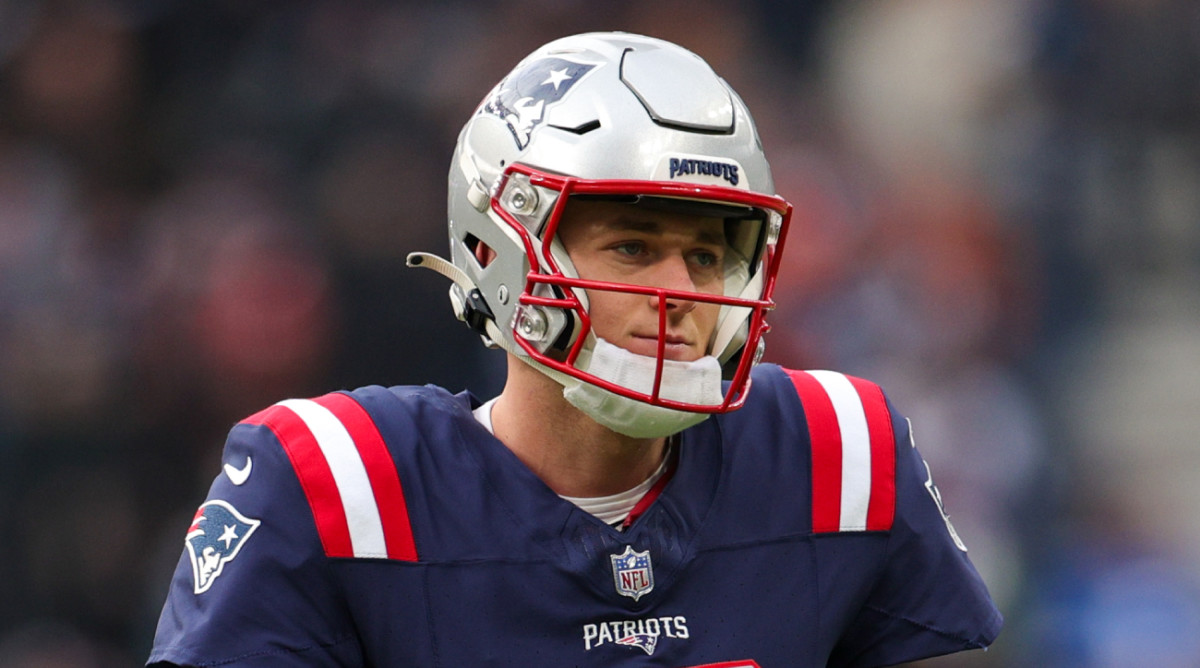Examining What’s Wrong With the Bills

Time to clean up after the weekend with our Tuesday notes …
• I think the big question coming out of Week 10 is one that was being asked starting late Monday night—what is wrong with the Bills?
I went to a couple of guys for answers Tuesday morning who have gotten a look at them this year.

“Despite having blue-[chip] players, they haven’t been able to establish a consistent style or level of play, which should be coming through by November,” texted one NFC pro scouting director. “I don’t know if Sean [McDermott] is doing too much, running defense and the team with an inexperienced OC [Ken Dorsey, who was fired Tuesday morning]. And the injuries on defense are real—[Matt] Milano is very important and easy to underrate sometimes. Seems like they’re pressing and playing tight. And I think they do miss [Brian] Daboll.”
“A number of different reasons for it,” a rival AFC exec told me. “Defensively, they’ve regressed. They are slower. Not having Milano and [Tre’Davious] White with the injuries, lost [Tremaine] Edmunds in free agency, missed on first-round corner—when they needed it—both safeties [Jordan Poyer and Micah Hyde] are on the decline. Offensively, it’s the turnovers. The quarterback [Josh Allen] isn’t playing well—poor decisions and not having Daboll on his ass is probably affecting him.
“I think one of the things that made Allen such a pain to defend was his ability to run—don’t have numbers in front of me, but seems like they’re doing that less, probably to protect him.”
And the numbers do, in fact, check out—Allen is on pace for 81.6 carries for the year, 4.8 per game this year, after running the ball 124 times last year and 122 times the year before. That’s a significant difference, and, while it’s definitely good for his long-term viability, making him less of a threat in the run game for defenses (his average, too, is down to 5.1 from 6.1 last year and 6.3 in 2021) would come with a short-term cost.
Watch the Bills with Fubo. Start your free trial today.
Which brings us to the bigger question: What’s the short-term outlook here, with an aging core versus the long term with Allen as the centerpiece of an eventual retool?
As the AFC exec said, Hyde and Poyer are 32, Von Miller is 34, Mitch Morse is 31 and Stefon Diggs turns 30 in two weeks. Dion Dawkins and Milano are 29, and White turns 29 in January, and will be coming off his second major injury in three years at a position where athleticism is at a premium. So some shuffling is coming, whether it’s after this year, or next year, around the franchise quarterback.
Now, remember, the current brass built this team into a top-of-the-league type of operation that other teams plucked from, so I’d trust GM Brandon Beane and coach Sean McDermott with the next phase of Allen’s career in Buffalo. That, as we know now, will start with a new coordinator …
• Joe Brady’s career arc has been fascinating. He came to prominence in 2019, one year removed from being a quality control assistant in New Orleans, helping to lead LSU’s historic offensive explosion as pass-game coordinator for Joe Burrow, Ja’Marr Chase and Justin Jefferson. He became a hot name in coaching, went with Matt Rhule—with whom he shared an agent—to Carolina to be the Panthers’ offensive coordinator in ’20. By January ’21, at age 31, he was interviewing for the Falcons, Jets and Eagles coaching jobs.
Ten months after that, Rhule fired him. The Bills then plucked him to coach quarterbacks.
So what happened? Digging around a little in the immediate aftermath of Buffalo’s decision Monday to fire Dorsey and elevate Brady on an interim basis, and with people having had the benefit of a couple of years to decompress, there are a couple of reasons why it didn’t work out in Carolina.
First, the marriage between Rhule and Brady was an arranged one, aimed at giving Rhule someone young, creative and with a background in a revered NFL offense. Plus, it gave Brady a shot at running one of those offenses on his own. As time went on, and this is probably no one’s fault, a bit of a personality conflict revealed itself, between the demonstrative Rhule, who would touch every corner of his football operation, and the more reserved Brady.
Second, Brady, who was 30 at the time of his hire, probably wasn’t quite ready for the job. He wasn’t even the primary play-caller at LSU. And while everyone in Carolina thought his plan and his scheme were sound, his inexperience did show up in some second-level adjustments that are necessary for an NFL play-caller to make on the fly. Also, his first year, he had Teddy Bridgewater, who’d played in the Saints’ offense at quarterback. In Year 2, lacking a QB experienced in the scheme, some more of the first-timer issues cropped up.
Even still, everyone in the Panthers’ organization saw an organized, detailed, imaginative offensive coach with the disposition to create an inclusive working environment—all of which was why he really impressed the teams he interviewed with. In fact, in circling back with the teams that were interviewing head coach candidates that year (an exercise I go through every year), one team that sat down with Brady told me he was so good in that setting that they nearly reversed course and hired him, calling him a future “superstar.”
Can he be that for the Bills? I’d say his relationship with Allen gives him a really good starting point, and it’ll be interesting to see whether some Saints elements (hard play-action, more in the short-to-intermediate game) start to creep into a Bills offense (heavy on RPOs and downfield shots) that’s very different from Sean Payton’s old New Orleans scheme.
One other thing that should help is having a guy in-house—Mike Shula—who’s been an NFL OC before, something he didn’t have in Charlotte.
• One more thing on the Bills before we move on: It’s always amazing how little breaks (and breaks going the wrong way) can reverberate for years.
During the 2022 draft, Buffalo was aggressively looking to move up for a corner. And their own in-house video production showed their disappointment when the Chiefs moved up aggressively from No. 29 to 21 to pluck the guy the Bills wanted, Washington’s Trent McDuffie. The Bills ended up moving up from No. 25 to 23 anyway, landing Florida’s Kaiir Elam instead.
McDuffie, a year and a half into his career, may already be one of the 10 best corners in football. Elam, meanwhile, struggled as a rookie, has been a healthy scratch five times this year and went on injured reserve Nov. 2 as the team tries to rebuild his confidence. His failure, of course, has been highlighted in White’s absence, and contributed to the team’s need to acquire Rasul Douglas at the trade deadline.
(Last week, by the way, we spelled out how poorly the Patriots, the team that traded the McDuffie pick to Kansas City, came out of this whole thing as well.)
In case you’re wondering, it was the Ravens whom the Bills traded with, and they used the picks coming back on center Tyler Linderbaum and punter Jordan Stout. Both guys are squarely in the running for Pro Bowl honors as second-year players.

• Last week we ran my annual midseason awards poll, and, as part of it, I asked two additional questions of the personnel folks I polled. One was for the most underrated player in the league, the other was to name an emerging, under-the-radar league trend. And in asking for underrated players, one interesting theme that emerged was the raw number of Eagles who came up.
Four were named—TE Dallas Goedert, DE Josh Sweat, S Reed Blankenship and WR DeVonta Smith—which to me is a good feather in the cap for Howie Roseman’s staff in Philly.
Here’s the full list of others who garnered mention: Linderbaum, Vikings QB Joshua Dobbs, Rams WR Puka Nacua, Jaguars CB Darious Williams, Vikings DE Danielle Hunter, Seahawks CB Devon Witherspoon, Colts DT Grover Stewart, Steelers OLB Alex Highsmith, Lions OT Penei Sewell and WR Amon-Ra St. Brown, Bengals DT D.J. Reader, Chargers WR Keenan Allen, Saints DE Cam Jordan, Bears DE Montez Sweat, Dolphins FB Alec Ingold and, finally, Niners WR Deebo Samuel.
• As for trends, I am planning on diving into that more in the coming days, but one that I thought was really interesting, raised by an NFC exec, was the effect that the spread of Vic Fangio’s defensive scheme has had on the NFL.
According to this team’s numbers, heading into Week 10, NFL defenses were playing zone coverage 71% of the time, and with two high safeties 41% of time—both of those numbers stood as all-time highs for as long as this stuff’s been recorded. That, in turn, has led to fewer yards per play, fewer big plays, and, ultimately, less scoring, with teams forced to work the ball down the field more methodically (which limits possessions and shortens the game).
How much less scoring? Well, again, going into Week 10, it was 21.7 points per team per game, the fifth-lowest total since 2000, and the lowest, period, since ’05.
• Shane Steichen’s decision to bring Gardner Minshew with him from Philadelphia to Indianapolis this offseason wasn’t a novel one—a lot of first-time head coaches will import players from their old homes to be foot soldiers for them as they try to establish programs.
That said, because of Anthony Richardson’s injuries, which ultimately wound up ending the No. 4 pick’s rookie year, Minshew has needed to be a lot more than just that for the Colts. And as Steichen and I talked, while he got ready to return from Germany after Sunday’s 10–6 win over the Patriots, he made it crystal clear to me just how important it’s been for him to have Minshew with him in Indy.
“It’s been awesome to have Gardner here,” Steichen says. “You obviously want a guy that can go in and operate at a high level at that backup position. And just being around him for two years that I had in Philly and then get another opportunity here, three years with him now, just knowing each other really well and knowing how both of us operate and being on the same page has been big for our offense and this team.”

• Another eventful couple of weeks are ahead for a Patriots team that’s circling the drain.
On Monday, they cut troubled young corner Jack Jones, who had a host of red flags coming out in 2022 (which is why he was available in the fourth round), was suspended last year for missing rehab (and talking back to Bill Belichick after being confronted about it), faced felony gun charges in the offseason (he came to a plea deal on those) and was benched for the first quarter of the Commanders game after reporting late to the hotel the night before.
So there’s the question of where the locker room stands with Belichick stemming from that, and other situations, and then there’s the question of who the quarterback will be. Mac Jones’s feet, in particular, were a mess Sunday—with prime examples coming on the first and last throws of the first half—and provided another window into how it’s all come unraveled for the 2021 first-rounder, from whom the staff would like to see more accountability. The problem, from there, is there’s not a whole lot behind Jones on the depth chart.
For a 2–8 team, the Patriots are going to be awfully interesting to follow over the next few weeks and really through to the end of the regular season.
• ProFootballTalk’s Mike Florio dug up a fascinating stat Tuesday morning—and one that’s a bit damning on Justin Fields as the fellow 2021 first-rounder prepares to return to the starting lineup. To this point of the year, Fields ranks 32nd among qualifying quarterbacks in sack percentage (sacked on 12.9% of his drop-backs), while undrafted rookie Tyson Bagent, starting in his stead, is first (3.4%) playing behind the same offensive line.
The criticism of Fields, going back to his draft year, has been that he doesn’t see the field fast enough, doesn’t move in the pocket efficiently enough and, as a result, he’s in harm’s way more often than he should be. The sack numbers would back that up.
• Jason Pierre-Paul’s addition to the Saints’ practice squad this week, in what would be his 14th NFL season, is proof of the old NFL adage that there’s always work out there for qualified big men, because there’s just not enough of them to go around. Jason Peters’s place on the Seahawks roster is more evidence of it.
• So I guess the Broncos did the right thing in sticking with Vance Joseph, huh?
